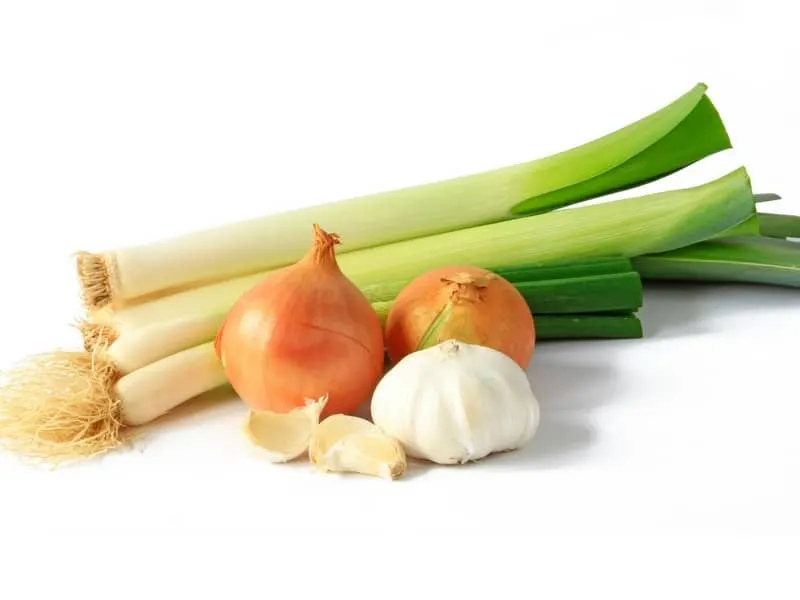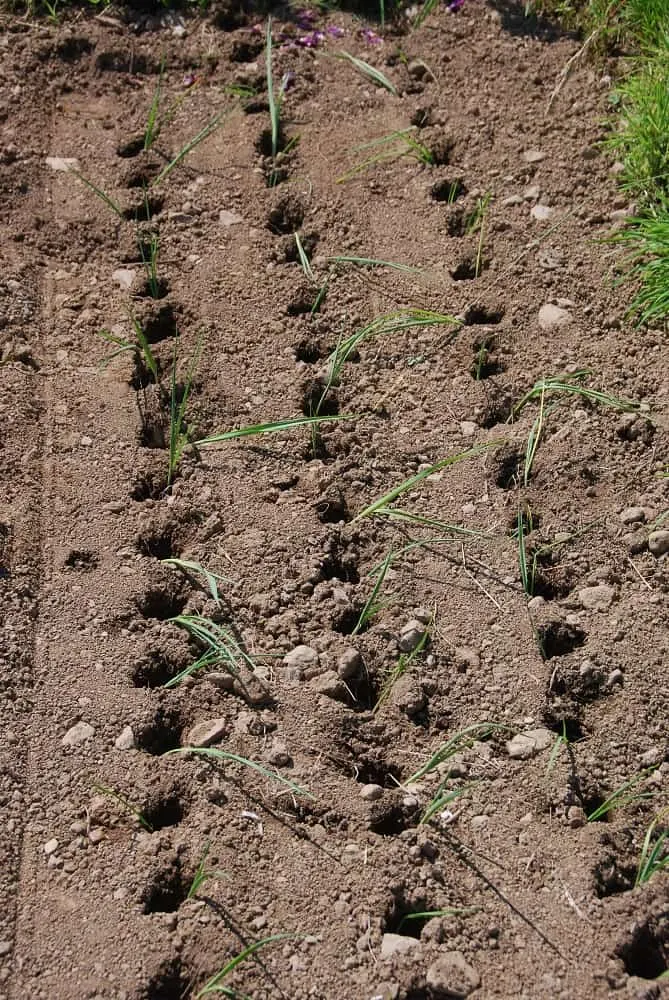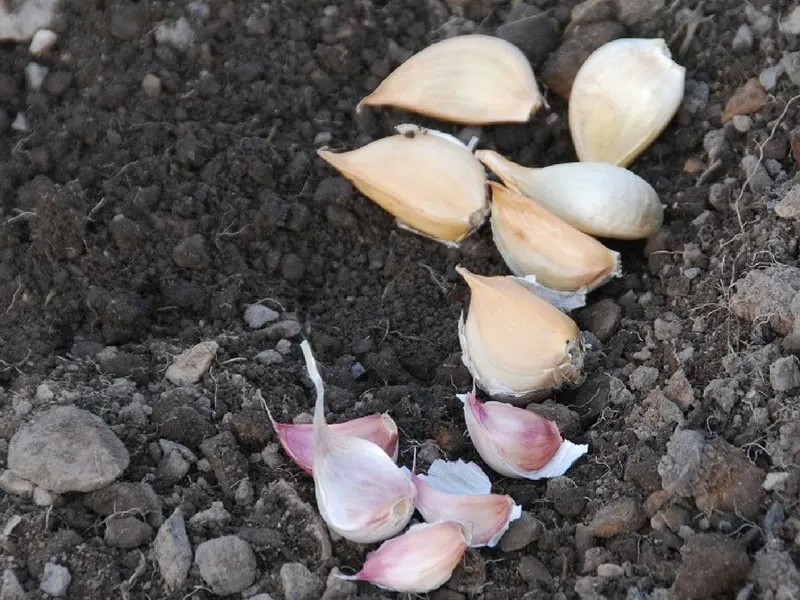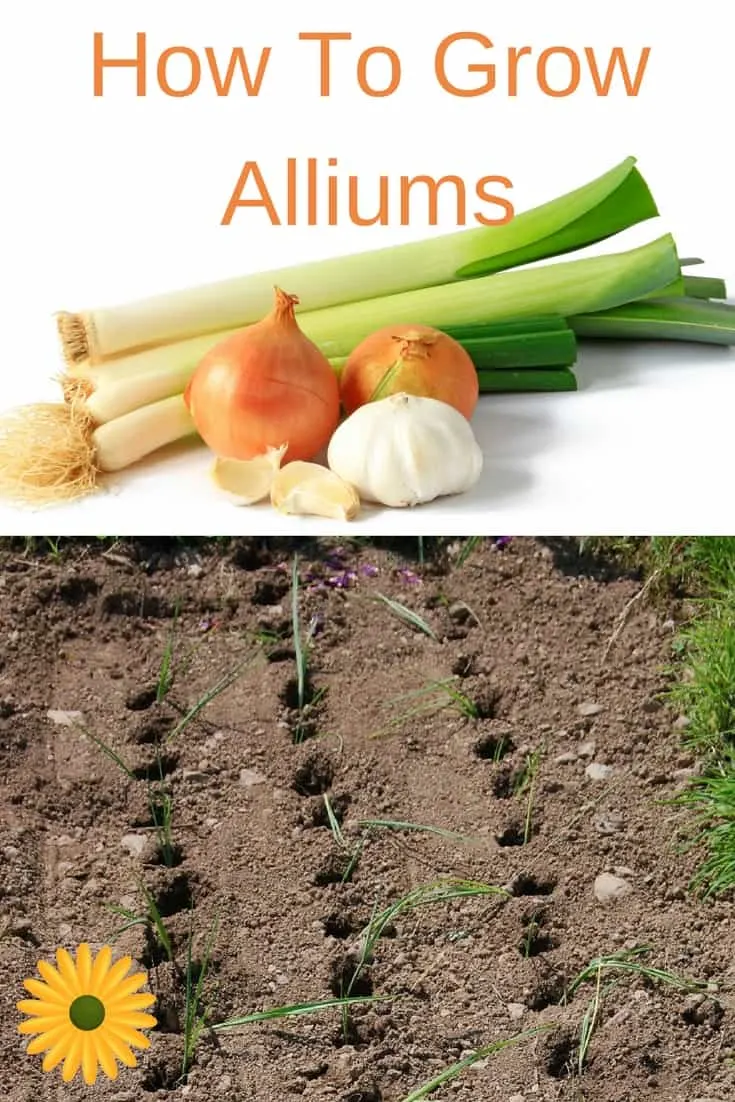The allium family of vegetables are easy to grow and often available year around. They can grow fairly close together, so they don’t take up too much space in the garden. So, do you know how to grow allium vegetables?

Our family has been planting onions and garlic for as long as I remember. We should actually plant more, because most of the time we run out before they grow to maturity. We LOVE adding both green garlic and onions to our salads, so we pick them early. They are DELICIOUS!
What Are The Allium Vegetables?
Wonder what it’s in the allium family? As I mentioned before alliums include onios, garlic and leeks. Also chives and shallots are part of this family.
All of the allium vegetables are must haves for amazing tasting cooking 😉
Allium flowers, while not used for food will surely add some beauty in your flower gardens.
How To Grow Allium Vegetables
Although the alliums are all a connected as a family, they each have a slightly different cultivation approach. Some use seeds, others use cloves and some use immature bulbs called sets. If you like foraging, wild garlic is great.
Onions can be grown form either onion seeds or sets. Each has their own pitfalls and advantages.
Garlic is pretty much trouble free, but onions are susceptible to a few pests and often pick up rotting diseases, particularly when they are in storage.
How to grow allium from seed
Growing onions (and other alliums) from seed is not difficult. Sow them directly in the bed or start them indoors using trays during March.
Sowing indoors gives the onion a longer season and should result in larger bulbs.
If you choose to sow your allium seeds in trays, once they have germinated inside keep them cool by moving them to an unheated greenhouse or cold frame, until the weather starts to warm outside, usually planting out in mid May.
Sowing directly is done at the beginning of April, preparing the soil as you would for all alliums. Take time to rake the soil to a fine tilth. The tiny seedling will do better in finely ground up soil.
You might want to try sowing into a stale seed bed to give young seedling a better chance when competing with localized weeds. To create a stale seed bed, prepare the soil a few weeks before you are ready to sow, and leave it alone for a couple of weeks. Any native seeds will germinate, but before they become established hoe the bed to kill the weeds and sow the allium seeds. This should give the onions a head start on deeper seeds that are in the bed.
Sow the onion seeds thinly in drills about 4″ apart.
Other alliums you can grow from seed are chives, spring onions, leeks and shallots.
Leek Heirloom Blue De Solaise Finest Seeds (Pack of 1000) Red Creole Onion Seeds – 300 Seeds
Red Creole Onion Seeds – 300 Seeds Herb Seeds – Chives – Heirloom – Attracts Pollinators – Liliana’s Garden
Herb Seeds – Chives – Heirloom – Attracts Pollinators – Liliana’s Garden
Growing onions (and garlic) using sets
Sets are the way most people grow onions. They are immature bulbs that you plant into the ground in a small hole. They are easy to handle, and as they are small bulbs, they tend to have a head start on seed grown varieties.
This is also how I like to plant our onions: much easier and faster than seeds. Of course it’s a bit more expensive to buy onions sets than buying allium seeds, and as you are relying on companies to grow to set size. Also, onion set varieties are far more limited than seeds.
When you buy your chosen sets you plant them out on a grid so that they are in their growing position from the start. This eliminates the need to thin out seedlings. And as the onion fly is drawn to the smell of the onions as they are handled, she is more likely to miss onion sets.
Preparing The Soil For Alliums

When preparing the soil to plant these bulb vegetables remember that this group does not need a lot of soil nutrients. Just dig over and add a little garden compost or leaf mold just to assist with draining, as all of these vegetables like a free draining soil.
You could also dust the ground a little blood and bone fertilizer to give the soil a bit of a lift, but don’t bother feeding the area for growing garlic.
As a trial we mulched onions and garlic with some old manure. We found out that while it did not seem to harm the onions, they did not store very well. Also, the garlic cloves started to split and tried to regrow.
So never assume that the extra food will help to grow better veggies, as sometimes it just doesn’t work.
If your soil gets water logged over the winter, when you sow your garlic, drop a bit of grit or horticultural sand in the bottom of the planting hole to help water drain away.
How To Grow Alliums
Growing onions
Onion Sets ,MIX, Red,Yellow,White (50-70 bulbs) Garden Vegetable Onions can be sown in two ways, either by seed or by using immature bulbs called sets. We tend to use sets as it is a little easier.
Onions can be sown in two ways, either by seed or by using immature bulbs called sets. We tend to use sets as it is a little easier.
If using the set method, simply dib a shallow hole for the set to sit in, put the blunt or root side down into the soil, and thinly cover. You will need to follow the space recommendations of the onion you are growing as they will need to have room to swell. Then simply keep weed free and watered when dry.
You can also grow overwintering onions that will mature much faster than the summer crop.
Shallots are a type of onion that are grown in much the same way, although instead of one bulb swelling, similarly to garlic they split and swell a number of bulbs.
Growing garlic

Garlic is another one of the allium vegetables that you do not use seeds; instead you buy the garlic variety you want to grow in a bulb form, then split off each clove and plant in much the same way as you plant onion sets.
Organic Softneck Garlic Early Italian Purple – Perfect for Braiding & Mild Climates – 1/2 lb. Garlic Bulbs for Planting! There are a number of garlic varieties which fall into either a soft neck or hard neck types, all with different flavors and storage abilities.
There are a number of garlic varieties which fall into either a soft neck or hard neck types, all with different flavors and storage abilities.
You can also grow elephant garlic which looks like a giant garlic bulb, tastes garlicky and grows like garlic, but is actually a type of leek.
When you buy your garlic seed bulbs you will find that they are much more expensive than the garlic at the supermarket. This is because seed bulbs are selected bulb varieties that have been bred to thrive in our climate, and have been developed to provide a far more superior flavor.
Don’t be tempted to plant cloves from supermarket bulbs, unless you’re planning to harvest them green for salads. We do this and enjoy it very much!
Growing leeks
Leeks are one of the allium vegetables that are grown from seed. Simply scatter seeds onto a large pot of general purpose compost in March or April, and once they are about the thickness of a pencil, separate the seedlings and plant out in 6″ dibbed hole (this is my favorite dibber).
Other than weeding and watering when necessary there is very little more to do. You can start to harvest leeks as you need starting in September.
Leeks can stay in the ground all winter making them a valuable winter crop.
Growing spring onions
Scallions or spring onions are also grown from seeds. Sow them directly in the ground about four weeks before the final frost date.
Growing chives
Hinterland Trading Common Chives 250+ Seeds Chives can be sown from early spring onward, either in pots or straight into the herb bed. We would tend to keep the chives with the herbs to make collecting herbs easier.
Chives can be sown from early spring onward, either in pots or straight into the herb bed. We would tend to keep the chives with the herbs to make collecting herbs easier.
The herb bed is probably a good place to grow Welsh onions too. These are onions that cluster together: just plant a few bulbs and they will send up more and more bulb clusters.
They’re a good flavor onion if a little awkward to separate and peel.
Allium Pests
Onion Fly
The onion fly lays eggs in the soil around onions and when the eggs hatch the grubs eat at the roots and sometimes the bulb of the onion causing the bulb to yellow and die.
As a control, if you regularly hoe the soil in and around the onions, then you’ll expose the bugs to birds. Growing from sets will also help as the onion fly tends to lay her eggs quite early, and as she hones in to the smell of onions, which is far stronger when thinning seedlings, the sets should be missed.
If you sow by seed, thin out seedlings late in the day, cover alliums with horticultural fleece until the plants have recovered. from the bruising thinning out causes.
Onion Eelworm
If you are find this allium pest in your soil there isn’t much you can do for the current season.
The only thing you can do is dig up and destroy affected plants, and accept the losses you will undoubtedly have. Once the season is over, take this part of the garden out of your rotation crop plan and grow consecutive seasons alternating growing lettuces and brassicas.
It could take four years to clear the problem, so you’ll need to be patient.
Allium family diseases
Onion White Rot
If this fungus exists in your soil you will only be aware of it when the plant turns yellow and dies. You can only then check the symptoms, and if white rot exists, it is evident by a fluffy white fungus on the roots.
There is no treatment for this disease, and the only likely chance you have will be to take onions out of this part of the garden for a number of years, in the hope that the fungus will die off. There is no scientific fact to express an actual time that it will take to dissipate, but the longer you can keep allium family plants away from the affected area, the better.
It is also worth pointing out that this fungus can be transported on your boots and on tools, so hose off after working in this area.
Storage Rot And Neck Rot
Although these are different diseases, they are often evident with the same symptoms. Learn more about how to prevent onion bulb rot.
Neck rot is found in the soil but probably won’t show itself until it comes to storage. Storage rot is caused through poor storage and drying, or possible damp weather.
Both diseases cause the neck of the onion to go soft and rot.
To avoid storage rot:
- keep bulbs dry during harvest
- leave bulbs on their side in the sun for as long as possible
- spread on chicken wire frames to dry covering when rain threatens
- do not cut of leaves
- use thick necked and damaged bulbs first
- twist tops and store on shelves in a frost free shed
Also setup some growing rules to help onion plants to store better:
- avoid too much compost and fertilizer, particular nitrogen rich feeds such as manure
- do not feed or mulch the soil with any extra fertilizer after June and water in dry spells
If you have stored correctly and you still experience a rot you may have a neck rot infection, which is a soil fungal problem. If this is the case, take the allium family of vegetables out of your rotation and avoid planting alliums on this part of the garden for three years.
Although these diseases all carry or refer to onions, other allium vegetables can also get some of these infections.

Adriana Copaceanu is a passionate nature lover living in the country on her dream property where she grows vegetables, lavender, and wildflowers that she shares with the wildlife they attract. When she's not in the garden, she loves spending time with her chickens and planning her next nature project. Check out her books below:
How to Grow Lavender for Fun and Profit: Lessons Learned from Planting Three Hundred Lavender Plants







11 Great Companion Plants For Sunflowers (And 3 To Avoid)
Friday 30th of June 2023
[…] different levels of the soil, which means they won’t compete with each other for nutrients. Growing allium vegetables is […]
Are Chive Flowers Edible? 10 Clever Ways To Use Chive Blooms
Wednesday 29th of September 2021
[…] favorites, are grown for their flavor and for medicinal purposes. Chives, like other members of the allium family, contain flavonoids, antioxidants, living enzymes, and other compounds that are known to fight […]
Backyard Vegetable Garden Ideas
Saturday 6th of March 2021
[…] How To Grow Allium Vegetables […]
Vegetable Gardening For Beginners - Everything You Need To Know
Monday 30th of November 2020
[…] Alliums include bulb plants such as onion, leek and garlic. They are all shallow rooting plants so any goodness needs to be near the surface. […]
Self Seeding Plants For An Easy And Gorgeous Garden
Monday 14th of September 2020
[…] in the allium family, like onions, leeks, and scallions are biennials self-seeders. These will overwinter nicely in the […]